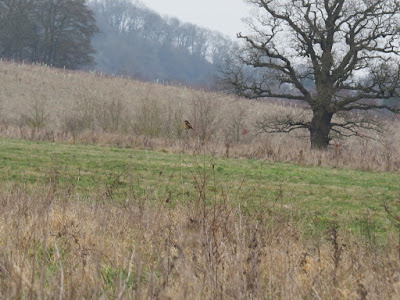If you wanted to encapsulate the changes in bird populations that have occurred over the last twenty years, you need look no further than this morning's visit to the patch.
A pleasantly mild, fairly sunny start was brightened still further by the brief appearance of a
Red Kite which flew over the Chat Field pausing only to circle once or twice above Church farm.
 |
| Red Kite |
At the Flash Field an apparition of pure white emerged from behind the sedge. The Little Egret was still present.
 |
| Little Egret |
A couple of hours later, as I drove home having again failed to locate any Yellowhammers, having seen no Grey Partridges among the Red-legs, the only sparrows on offer being House Sparrows, I spotted a flock of corvids wheeling around over Pooles Wood. Astonishingly at least 18 of them were Ravens.
 |
| Some of the Ravens |
When I got home I reached for my latest WMBC Bird Report thinking that this could be a new Warwickshire record only to discover I was not even close. In 2016 a flock of 58 had been seen at Priors Hardwick on April 2 of that year.
How times change.
Turning back time, just to this morning at the Chat Field, the scrubby patch the Red Kite had overflown contained three out of a grand total of five Stonechats seen within my self-imposed patch boundary today.
The Flash Field contained not just the Little Egret, but also eight Teal, several Mallard, a pair of Shelducks, two Shovelers, four Lapwings, and six Coot. A Little Owl stared at us from its usual tree, and later I was able to show Dave the Barn Owl, which was still lurking in the back of its box at the south end of the site.
 |
| Little Owl |
I just hope these two species maintain their tenuous claim as ever-present residents at Morton Bagot.



























